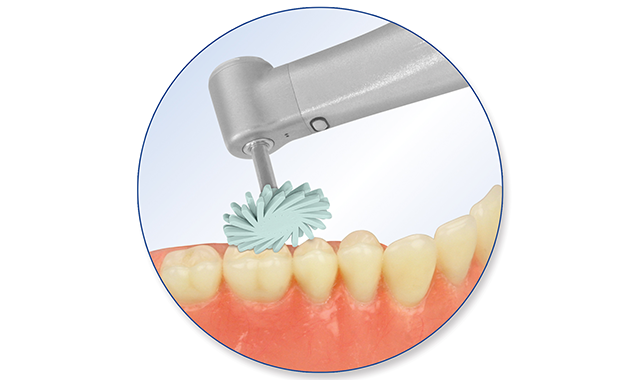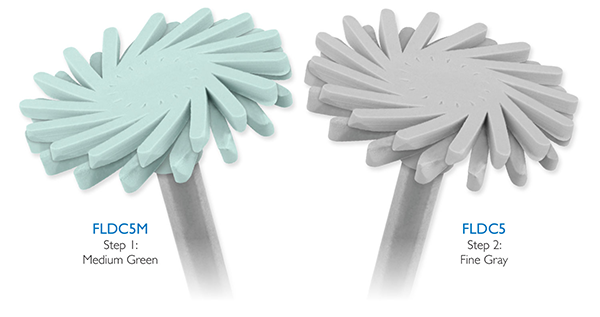- Best Practices New Normal
- Digital Dentistry
- Data Security
- Implants
- Catapult Education
- COVID-19
- Digital Imaging
- Laser Dentistry
- Restorative Dentistry
- Cosmetic Dentistry
- Periodontics
- Oral Care
- Evaluating Dental Materials
- Cement and Adhesives
- Equipment & Supplies
- Ergonomics
- Products
- Dentures
- Infection Control
- Orthodontics
- Technology
- Techniques
- Materials
- Emerging Research
- Pediatric Dentistry
- Endodontics
- Oral-Systemic Health
Better polishability with Brasseler Feather Lite polishers
Finding a polisher that works for you can be tough. Here’s what one practitioner says works for her.

Lee Ann Brady, DMD, operates a private restorative practice in Phoenix, Arizona. She’s also the director of education for The Pankey Institute, which offers educational programs focused on occlusion and restorative dentistry. In addition, she’s the founder of Restorative Nation, a learning community for dentists that offers educational resources, forums and webinars.
It’s fair to say that Dr. Brady spends a lot of time thinking about creating the most natural restorations (in both look and feel) for her patients. That’s why she sought to find the best polisher available in terms of polishability, efficiency and longevity.
When Dr. Brady started looking around for a better polisher, it was because she had experienced frustration with other polishers becoming dull rather quickly. Because the shape of her previous polisher came to a tight point, it allowed her to get into the fine detail of the occlusal surface of the tooth. The downside of that sharp point is that, like a freshly sharpened pencil, it would soon wear down. The blunted tip would no longer be able to get into a tooth’s grooves and fissures.
Read more: Brasseler USA introduces C-Series carbides
“Literally in the first use, you’ve blunted the tip,” she says. “You might be able to polish just two or three teeth before you no longer have access to all those grooves.”
As she started looking for alternatives, one in particular caught her eye: Brasseler’s Feather Lite™ polishers. She discovered that the sterilizable and reusable Brasseler Feather Lite polishers can easily adapt to any surface, thanks to their shape.

“The design of the Feather Lite just looked like it would give me greater access and not wear down or change shape over time,” she says. “And that has turned out to be true.”
The Feather Lite gets its name from its design: a miniature and more refined version of an 18th-century chimney sweep broom. Made from different types of a durable, diamond-impregnated rubber - depending on the type of restoration - the Feather Lite polishers are able to get into the fine details of the tooth surface as it’s polished.
Because of that feathery design, it doesn’t wear down and change shape over time, providing consistent access in its life.
Patients benefit from a polished tooth by enjoying an esthetic result and a natural feel. An effective polish allows the dentist to create a restoration that feels identical to the tooth surface - the patient shouldn’t be able to discern a difference. Also, the smoother the surface, the less opportunity plaque and bacteria have to stick, ensuring the tooth’s longevity.
Trending article: What you NEED to know about single-use instruments
“When you’re looking at a polisher, you’re looking for something that’s highly effective, so you’re going to get a nice polish, but it’s also efficient so that you’re going to get that high polish without having to spend an extended period of time polishing them,” Dr. Brady says. “And that you’re going to have great access so the polisher can get into all of the different nooks and crannies and crevices, whether you’re working on a front tooth or a back tooth. These polishers have all of those features.”
Dr. Brady also loves that the shape is available for many types of dental materials. With three shapes available - the DiaComp™ for intraoral composites, the Dialite® for porcelain and the PMMA for CAD/CAM restorations - clinicians aren’t limited by the type of restoration they use.
“You can get that shape and use it specifically for composite or specifically for ceramic crowns and most effectively polish all the different materials we use in dentistry today,” she says.
America's ToothFairy Initiative Bridges Dental Care Gap for Vulnerable Children
April 18th 2024America's ToothFairy, a nonprofit organization, aids safety-net dental clinics in providing essential care to children in need, with their recent online auction raising money to support access to dental services for thousands of vulnerable kids.
Product Bites – November 10, 2023
November 10th 2023The weekly new products podcast from Dental Products Report is back. With a quick look at all of the newest dental product launches, Product Bites makes sure you don't miss the next innovation for your practice. This week's Product Bites podcast features new launches from Amann Girrbach, DMG, Pac-Dent, and ASI Dental Specialties. [4 Minutes]
